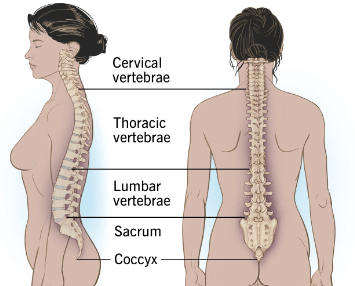Good posture is an essential part of staying healthy, fit and unlocking your full physical potential. It helps you to maintain proper alignment of your spine, shoulders and hips, enabling a full range of motion. It also provides stability which can help prevent sprains, strains and falls.
Standing up straight will help keep your core muscles engaged so that you can benefit from improved balance. It can also improve your appearance by giving you a more confident, energetic look. So, strive to keep good posture and enjoy the benefits it has to offer.
How to maintain good posture for optimal health and comfort
Proper posture involves positioning your body in a way that places minimal strain on your muscles and ligaments while standing, sitting or lying down. It’s important to train your body to recognise good posture.
Posture relies heavily on the proper alignment of the spine. The spine has three natural curves located in the neck (cervical), mid/upper back (thoracic) and lower back (lumbar) – good posture means that these arcs are maintained.

In optimal posture, a vertical line of gravity should pass through certain points of your body.
If you observe yourself from the side, the line of gravity should travel down through the following points in your body:
- The lobe of your ear
- Shoulder joint
- Hip joint
- Midpoint of your hip
- Slightly in front of the midline of the knee joint
- In front of the bony prominence on the side of your ankle (lateral malleolus)
From the front or back, the vertical line through your body’s center of gravity should cut it evenly into two halves and your bodyweight should be equally balanced on both feet.
Download our handy infographic to learn how to adopt good posture whilst working at a desk.
Why do we often adopt poor posture?
Poor posture isn’t always the result of a bad habit. Sometimes a disbalance in strength and flexibility of your muscles and joints can lead to poor posture, for example:
- Limited flexibility in the muscles can reduce the range of motion at a joint, leading to poor posture. For instance, overly tight and short hip muscles may pull the upper body forward and overly tight chest muscles can draw the shoulders forward.
- Muscle strength plays an integral role in maintaining balance. The core muscles of your back, side, pelvis and buttocks provide a strong link between your upper and lower body. When these muscles are weak, it can lead to slumping which throws off your balance. Having strong muscles, for example in your lower legs, can help you stay steady on your feet, resulting in better weight distribution and making it easier to maintain good posture.
- Medical conditions such as those involving abnormal spinal curves including scoliosis, and osteoporosis can all contribute to poor posture. Other medical conditions, such as arthritis and joint inflammation, may result in postural changes that can lead to pain or discomfort.
What does poor posture do to your health?
Poor posture can cause muscle fatigue, tension, and strain by forcing the body to work harder than it needs to. This can lead to pain in your back, neck and shoulders, resulting in other parts of your body becoming overworked.
Bad posture can also disrupt circulation, impede digestion and increase stress levels, all of which can contribute to pain in the body.
How to improve your posture?
Don’t worry! Posture can usually be improved with the right exercises that help balance your strength and flexibility. For some people, the effects of exercise on posture can be seen and felt almost immediately. For others, it may take time for the relevant muscles to develop strength and form the habit of keeping proper posture.
Other ways to improve your posture include:
- Paying attention to your posture throughout the day and finding a comfortable and supportive sitting position
- Investing in ergonomic furniture
- Wear comfortable, low-heeled shoes that support the arch of your foot and provide better muscle and joint support
- Spending less time doing activities that can lead to poor posture – take breaks and get more exercise between watching TV or playing computer games
With the right workouts, you’ll be able to easily achieve the best posture.
For more information on how VIDA can help you improve your posture, get in touch with us at sales@vitruehealth.com or try out VIDA yourself for free!





